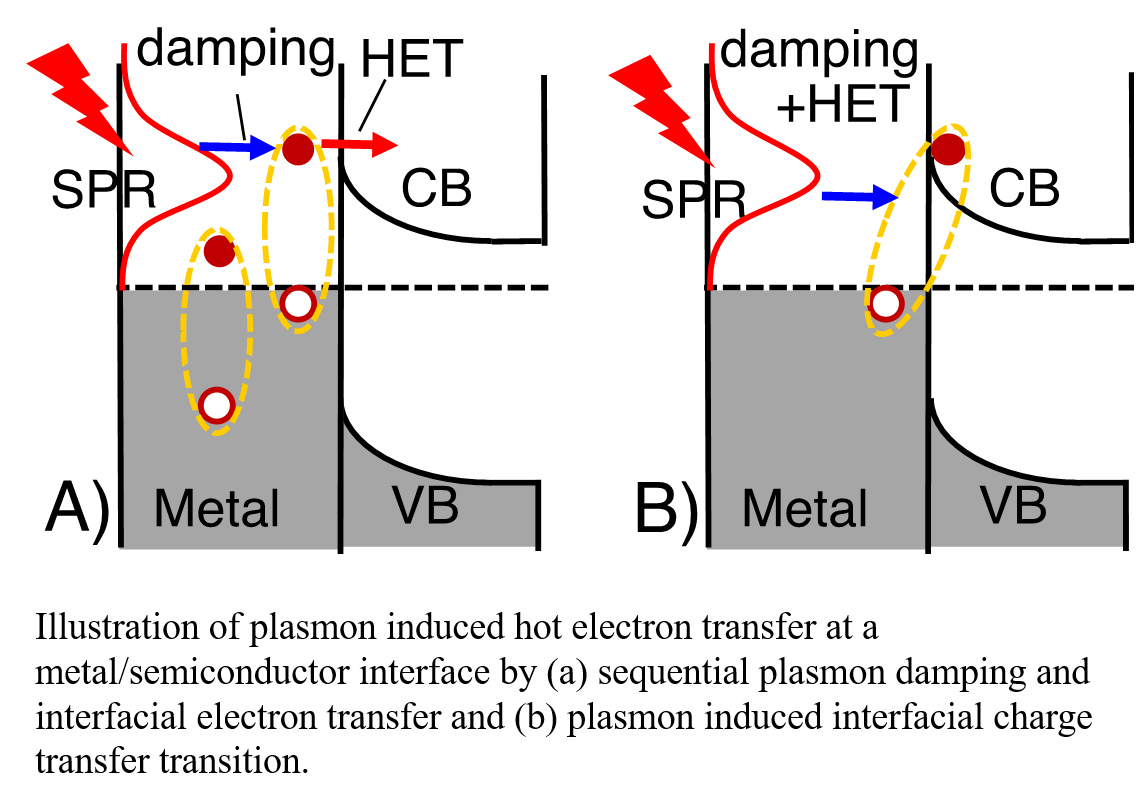|
Transformative new photocatalytic concepts/materials are needed to develop cost effective and sustainable catalytic systems for chemical transformations. Plasmonic photocatalysis utilizes hot carriers (electrons and holes) generated by plasmon excitation to drive catalytic chemical transformations. Despite immense potential, the reported quantum efficiencies of plasmonic photocatalysts are often low and their reaction mechanisms are not well understood. Selective transfer of hot carriers from the plasmonic metal to adsorbed reactants competes with many other plasmon and carrier relaxation pathways that can reduce efficiency and selectivity. We recently reported the presence of plasmon induced interfacial charge transfer transition (PICTT) pathway in strongly coupled metal/semiconductor, in which plasmons can decay by directly exciting an interfacial charge transfer transitions. Such process can in principle achieve near unity quantum efficiency of hot electron or hole transfer. The ability to model and control these processes, especially in the presence of strongly coupled catalysts (semiconductor, metal or molecule) is still lacking. Current research in this area is funded by DOE. We systematically investigate how the plasmon decay pathways in metal/semiconductor interface depends on the nature of the metal, semiconductor and their interaction. |
|


